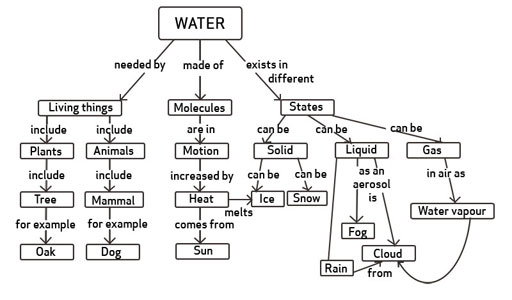1 Developing concept maps
Now try Activity 1.
Activity 1: Developing a simple concept map
Before you learn more about using concepts maps in your teaching, you need to understand the nature of the process of producing a map. Resource 2 explains how to construct a simple map and provides a completed example. Read this first and then construct your own concept using the following concepts:
- rain
- water
- clouds
- rivers
- soil
- oceans
- sun.
Now answer these questions:
- How does this process elicit understanding?
- How easy did you find developing your concept map?
- What were the challenges and how did you overcome them?
The emphasis on making connections between the words used in a concept map helps you to explore your understanding. Concept maps can be very simple or can be more complex and hierarchical in nature, with general concepts at the top and more specific concepts at the bottom (see Figure 2).

You can use concept mapping without ordering concepts from general to specific. With younger students, you would use fewer terms that are closely linked to what you have been learning about and not worry about hierarchical maps. With older students, you might attempt hierarchical mapping, but a lot of useful assessment information can be gathered through concept maps that are not hierarchical. Your students will need to be introduced to concept mapping before you can use them in your teaching to explore their current thinking, but first you need to consider how you can interpret such maps.
Why this approach is important

